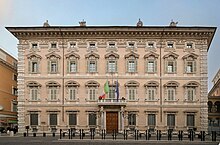
The politics of Italy are conducted through a parliamentary republic with a multi-party system. Italy has been a democratic republic since 2 June 1946, when the monarchy was abolished by popular referendum and a constituent assembly was elected to draft a constitution, which was promulgated on 1 January 1948.

The Senate of the Republic, or simply the Senate, is the upper house of the bicameral Italian Parliament, the lower house being the Chamber of Deputies. The two houses together form a perfect bicameral system, meaning they perform identical functions, but do so separately. Pursuant to the Articles 57, 58, and 59 of the Italian Constitution, the Senate has 200 elective members, of which 196 are elected from Italian constituencies, and 4 from Italian citizens living abroad. Furthermore, there is a small number of senators for life, either appointed or ex officio. It was established in its current form on 8 May 1948, but previously existed during the Kingdom of Italy as Senato del Regno, itself a continuation of the Senato Subalpino of Sardinia established on 8 May 1848. Members of the Senate are styled Senator or The Honourable Senator and they meet at Palazzo Madama, Rome.

The Italian Parliament is the national parliament of the Italian Republic. It is the representative body of Italian citizens and is the successor to the Parliament of the Kingdom of Sardinia (1848–1861), the Parliament of the Kingdom of Italy (1861–1943), the transitional National Council (1945–1946) and the Constituent Assembly (1946–1948). It is a bicameral legislature with 600 elected members and a small number of unelected members. The Italian Parliament is composed of the Chamber of Deputies, as well as the Senate of the Republic.

Palazzo Madama in Rome is the seat of the Senate of the Italian Republic, the upper house of the Italian Parliament.
A senator for life is a member of the senate or equivalent upper chamber of a legislature who has life tenure. As of 2023, five Italian senators out of 205, two out of the 41 Burundian senators, one Congolese senator out of 109, and all members of the British House of Lords have lifetime tenure. Several South American countries once granted lifetime membership to former presidents but have since abolished the practice.

The Chigi Palace is a palace and former noble residence in Rome which is the seat of the Council of Ministers and the official residence of the Prime Minister of Italy. Since 22 October 2022, the tenant of the Chigi Palace has been Prime Minister Giorgia Meloni, although she does not live in the building. It is located in the Piazza Colonna, next to Palazzo Montecitorio, seat of the Chamber of Deputies.

Ignazio Benito Maria La Russa is an Italian politician who is serving as president of the Senate of the Republic since 13 October 2022. He is the first politician with a neo-fascist background to hold the position of President of the Senate, the second highest-ranking office of the Italian Republic.

Alessandro Dudan was a Dalmatian Italian politician and senator. As a member of the Autonomist Party, he rejected the unification of Kingdom of Dalmatia with the Kingdom of Croatia-Slavonia.
Senators for life in Italy are members of the Italian Senate who are either appointed, limited in number up to five, by the Italian president "for outstanding patriotic merits in the social, scientific, artistic or literary field" or are former presidents and thus senators for life ex officio.

The Conservatives and Reformists was a broadly conservative and, to some extent, Christian-democratic and liberal political party in Italy, led by Raffaele Fitto.

The Parliament of the Kingdom of Sardinia was the bicameral parliament of the Kingdom of Sardinia.

Palazzo Giustiniani or the Piccolo Colle is a palace on the Via della Dogana Vecchia and Piazza della Rotonda, in Sant'Eustachio, Rome.

Enrico La Loggia is an Italian politician, former Minister of Regional Affairs from 2001 to 2006.
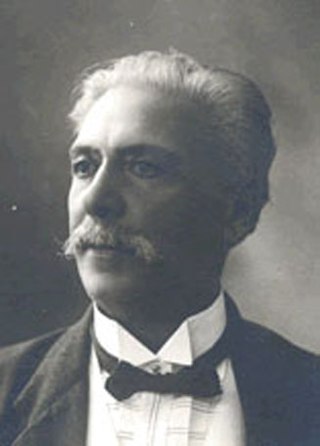
Ludovico Fulci was a lawyer and professor of jurisprudence from Sicily who became a national Italian politician. He can, for most purposes, be considered to have been a member of the Radical Party . During an unusually lengthy parliamentary career, he served as a member of the Chamber of Deputies , between 1882 and 1913, and then - some thought in defiance of his own his anti-Monarchist principals - accepted nomination by the king as a senator in 1919, serving in the senate until his death in 1934.
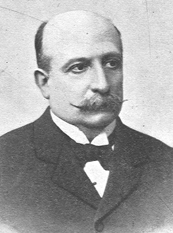
Luigi Miraglia was a university law professor who served between 1895 and 1897 as rector of the University of Naples. During his final years he made the switch to national politics, appointed to the Italian Senate on 14 June 1900. He also served as Mayor of Naples between 30 November 1901 and his death.
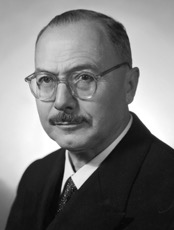
Antonio Azara (1883–1967) was an Italian jurist and politician who served as the minister of grace and justice from August 1953 to January 1954.

Pietro Fedele was an Italian historian and Fascist politician who served as Minister of Public Education of the Kingdom of Italy from 1925 to 1928.
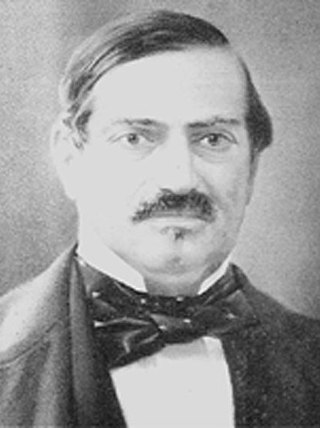
Raffaele Conforti was an Italian politician and senator of the Kingdom of Italy. He was a leading figure of the Risorgimento and the unification of Italy.

Giovanni Raffaele Francesco De Falco was an Italian politician, magistrate and senator of the Kingdom of Italy.
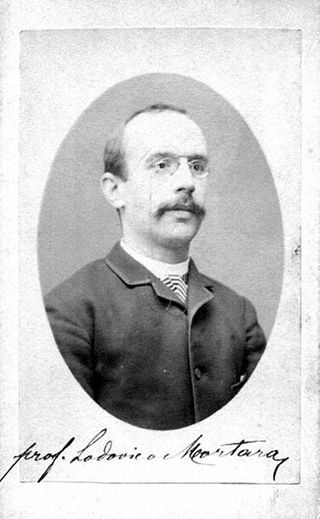
Lodovico Mortara was an Italian jurist, magistrate and politician, who served as Minister of Justice with the first Nitti government.

